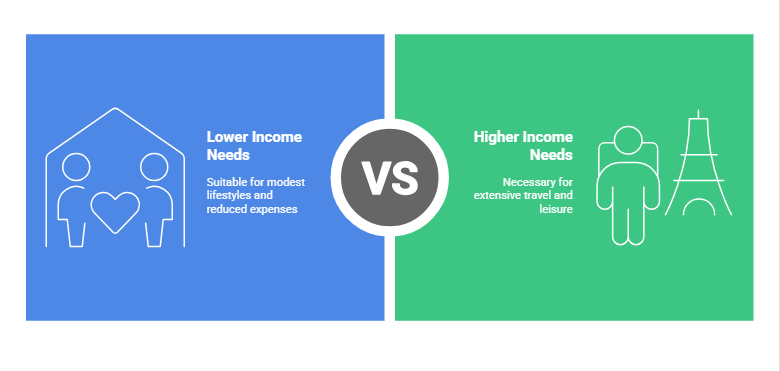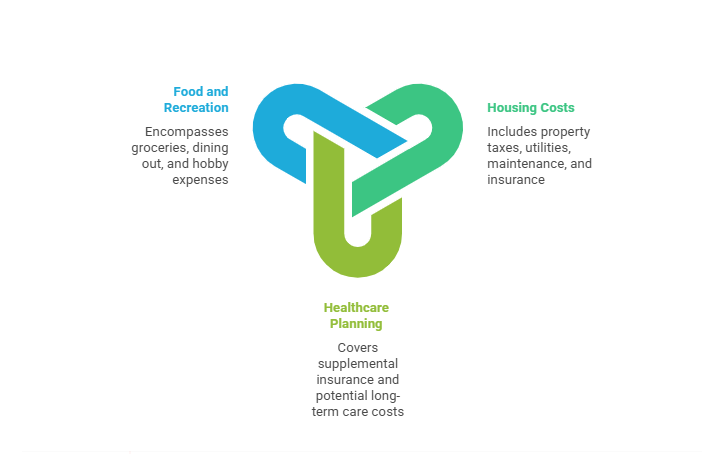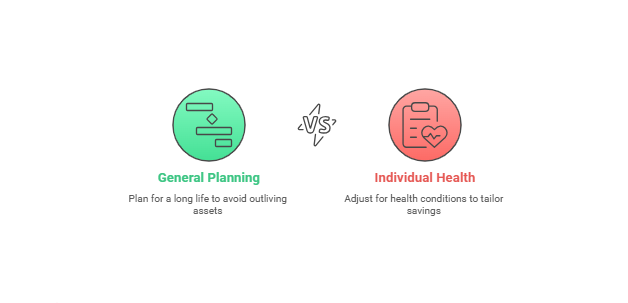
How Much Money Does a Couple Need to Retire Without Worry?
At some point, many of us ask the question: how much money does a couple need to retire without worry? While the sum varies based on lifestyle, health, and financial goals, there are some helpful guidelines that can lead us in the right direction. In this article, we will walk through key considerations, from calculating typical income replacements to factoring in life expectancy and Social Security benefits. Our goal is to help you feel more confident about your retirement outlook so you can focus on enjoying the life you have worked so hard to build.
Assess Income Requirements

Retirement experts often suggest that a couple requires around 70% to 90% of their combined pre-retirement income to maintain a similar standard of living in their later years (Western & Southern). This range varies according to factors like housing costs, personal spending habits, and whether you plan to travel extensively or keep a modest lifestyle.
The 70% to 90% Rule
Some retirees are perfectly comfortable living at 70% of their former income, while others might need closer to 90%. Couples who aim for the upper range often do so because they have big plans for leisure, family giving, or health-related costs. On the other hand, if you anticipate certain expenses dropping in retirement, you might feel comfortable budgeting less.
Lifestyle Adjustments
One couple might downsize their home and spend more time focusing on low-cost hobbies, while another could plan for frequent travel. Be honest with yourselves about the activities and day-to-day comforts you want to keep. By taking these lifestyle factors into account, you will see a clearer picture of how much you really need.
Estimate Key Expenses

In addition to aiming for a certain income replacement, it helps to look at your projected expenses in detail. You can also explore our guide on how much does retirement cost to see more ways of estimating spending.
Housing Costs
Even after paying off a mortgage, housing expenses remain one of the biggest budget items. Property taxes, utilities, maintenance, and insurance can add up quickly (Acts Retirement-Life Communities). If you plan to move or renovate, factor that in as well. Keeping these expenses as predictable as possible can help stabilize your monthly outlay.
Healthcare Planning
Healthcare costs frequently rise as we age. Medicare only covers some services, so you may want supplemental insurance, a health savings account, or extra funds for possible long-term care (Yieldstreet). Comparing different plans and projecting potential out-of-pocket costs can help you prepare for unexpected bills.
Food and Recreation
Contrary to popular belief, we do not always cut back on entertainment in retirement. We may dine out more or take up new hobbies needing gear or class fees. Meanwhile, groceries remain a steady expense. Budgeting realistically for food and fun preserves a sense of comfort in your day-to-day life.
Account For Longevity

Life expectancy plays a big role in how long your nest egg must last. Planning with the idea that you might live well into your 80s, or even your 90s, helps prevent you from running out of funds in your later years (Thrivent).
Individual Health Conditions
Each partner’s health can shift the overall timeline, especially if chronic conditions are involved. For example, high blood pressure or diabetes may reduce total life expectancy, affecting how much you need to save and how quickly you might draw from it (CNBC). We suggest considering these details with a medical professional, then folding that data into your financial plan.
Projected Life Expectancy
Many financial models use age 95 as a baseline to ensure you do not outlive your assets. If medical or personal factors suggest otherwise, you can tweak your calculations. Even planning for an extra few years can substantially change how you allocate savings and structure withdrawals.
Develop Savings Strategies

How do you start building the right amount of retirement savings? Two benchmarks frequently pop up in expert discussions: saving seven to eight times your annual income and withdrawing around 4% of your nest egg each year in retirement. Of course, these are just starting points.
The 7×-8× Rule
Aiming for seven to eight times your combined annual income by retirement can sound intimidating, but remember that compounding can do much of the heavy lifting when you invest consistently. According to some experts, hitting these multiples around your 60s puts you on track for a comfortable retirement, assuming you continue saving and investing wisely (Thrivent).
The 4% Guideline
The 4% rule suggests withdrawing about 4% of your invested savings in the first year of retirement, then adjusting for inflation afterward. While long-used as a yardstick, it is not a one-size-fits-all approach. If you are concerned about market fluctuations or seek personalized guidance, look into retirement withdrawal strategies to find a blend of safety and growth.
Consider Social Security

For many couples, Social Security forms an important income baseline. Still, it typically replaces only part of your pre-retirement earnings, so relying on it alone often creates a gap (Western & Southern). Delaying benefits until full retirement age—or even a bit longer—can boost monthly checks. Carefully timing both partners’ filings can make a big difference in your total lifetime benefit.
Finalize Your Plan
If you feel unsure about the right numbers or want a more detailed projection, you might explore working with a retirement plan advisor. A professional can run simulations that incorporate your unique factors, including health, housing plans, potential inheritance, or business sale proceeds. Remember that your plan should be reviewed and tweaked regularly.
Common questions about how much money does a couple need to retire include how to plan for healthcare costs, whether to factor in inflation, if Social Security can cover everything, why timing matters, and how to build a realistic withdrawal timeline.
Ultimately, tackling retirement planning with clear goals and realistic projections helps you prepare for potential surprises. The standard guideline of needing 70% to 90% of your previous income is a useful springboard, but you will fine-tune that figure when you consider spending patterns, health outlook, and personal preferences. We encourage you to keep reviewing your plan and adjusting along the way. This approach helps protect your financial future so you can enjoy the retirement you have earned.
Showcase your recognition by adding our award badge to your website! Simply copy the code below and embed it on your site to highlight your achievement.

Recent Posts
Retirement Planners in Los Angeles to Consider
Los Angeles, a city synonymous with opportunity and innovation, is...
Retirement Planners in New York to Consider
Navigating the financial landscape of New York can be overwhelming,...





